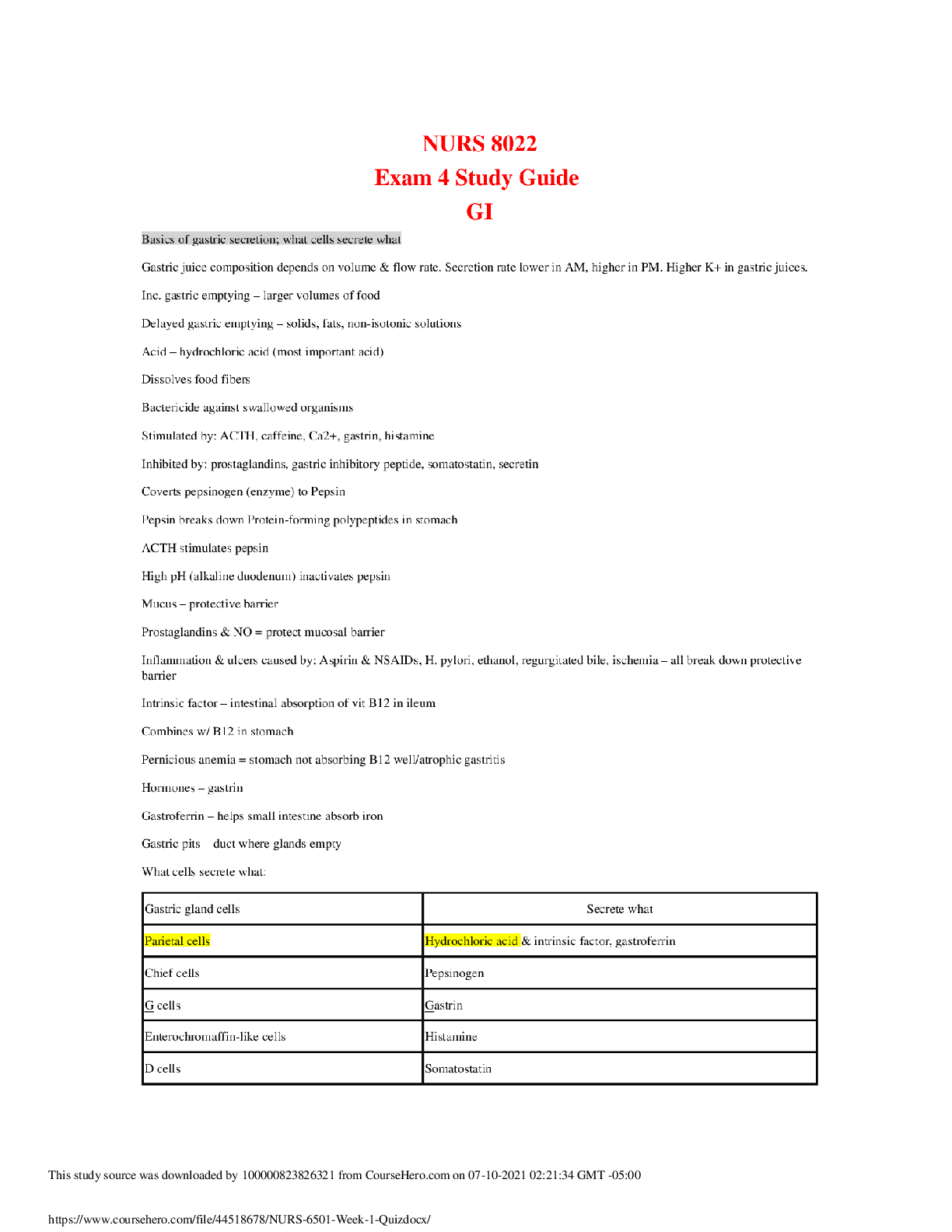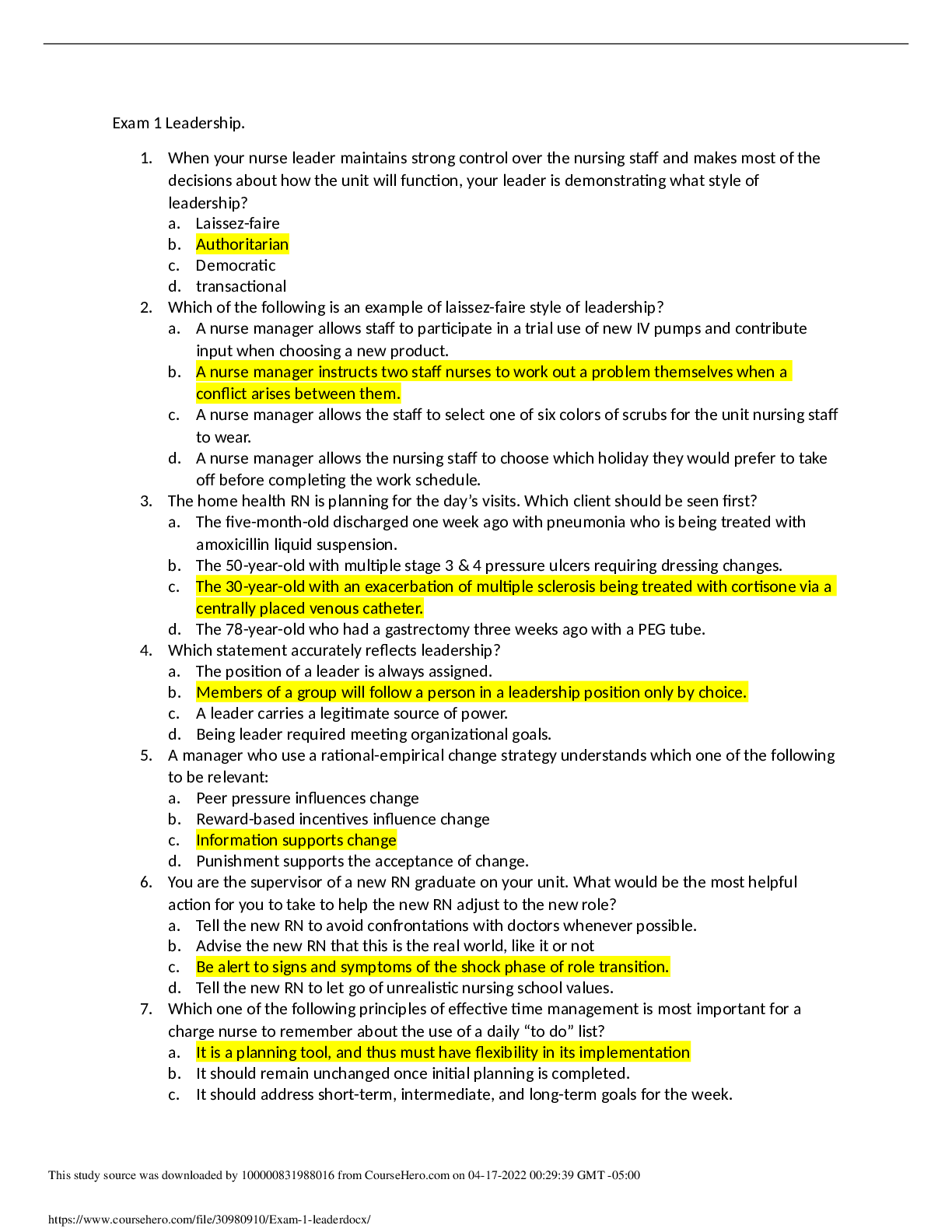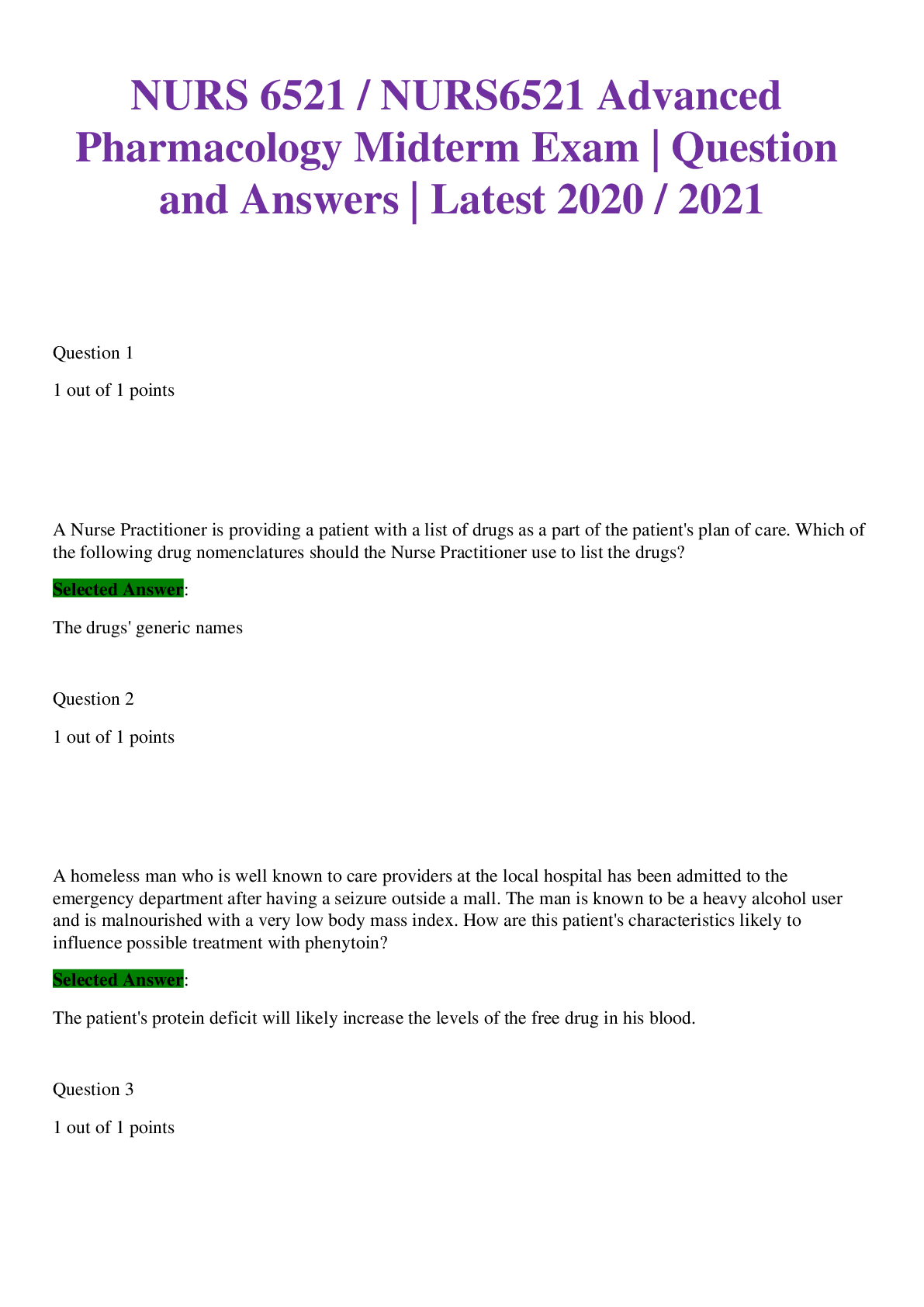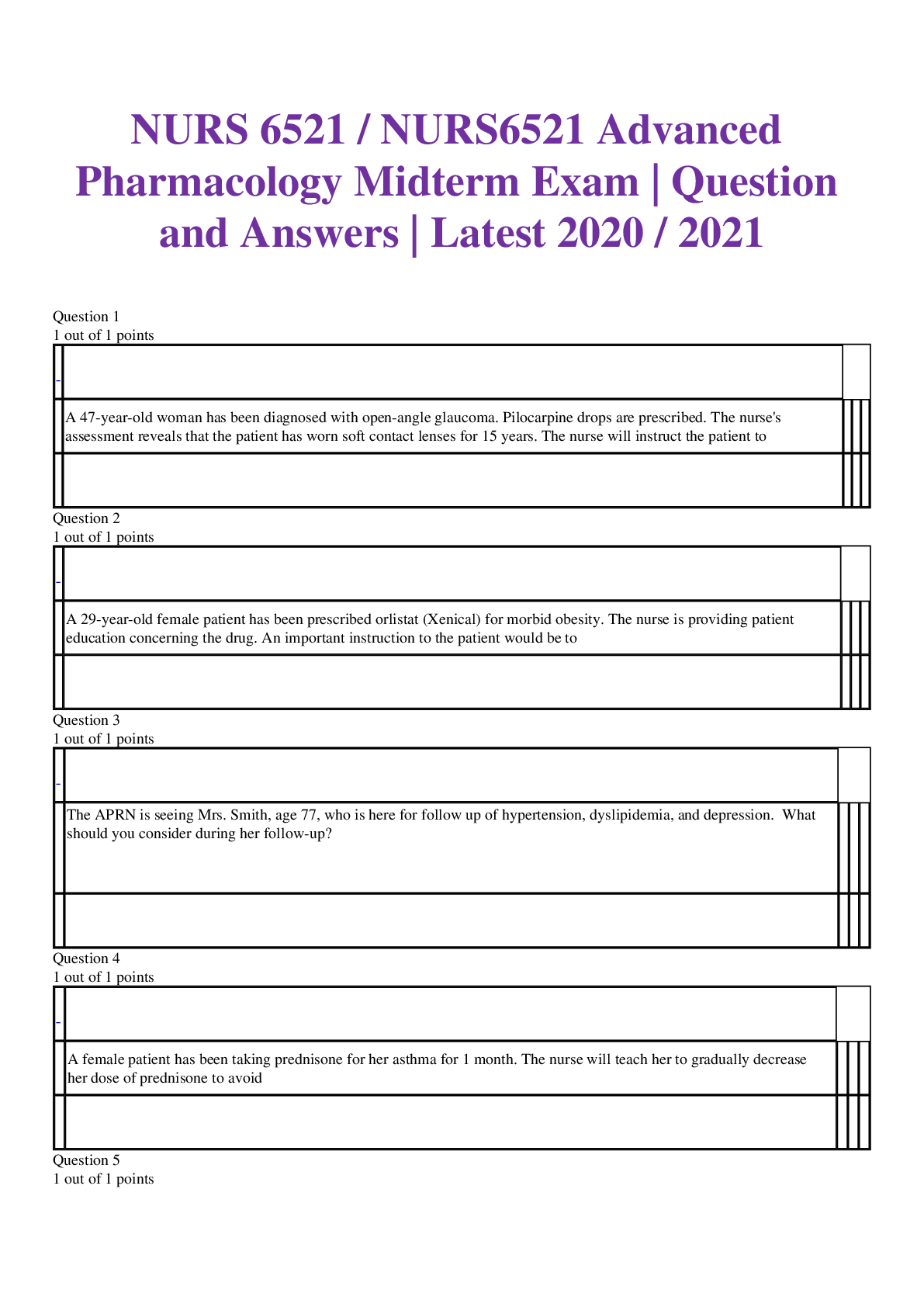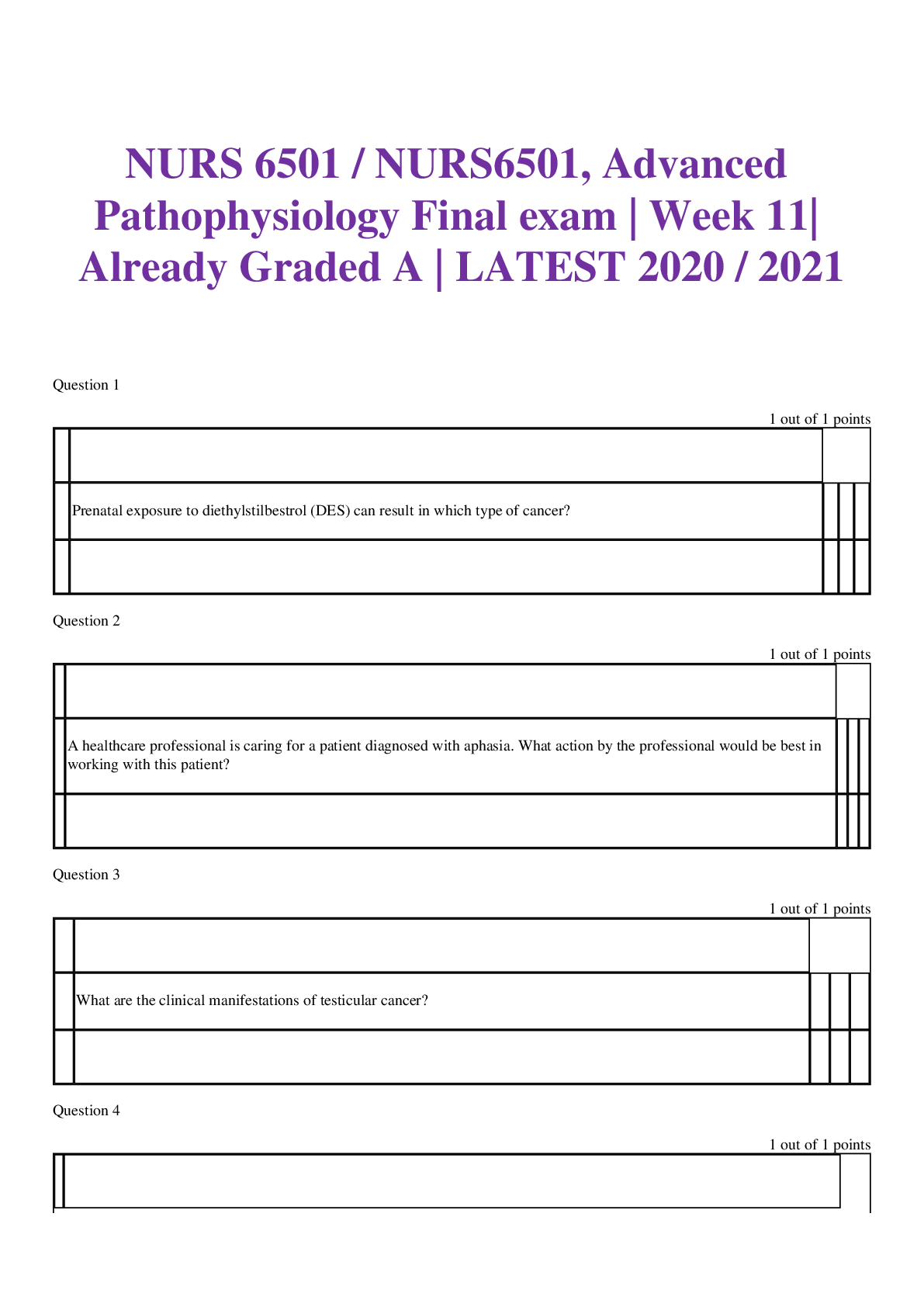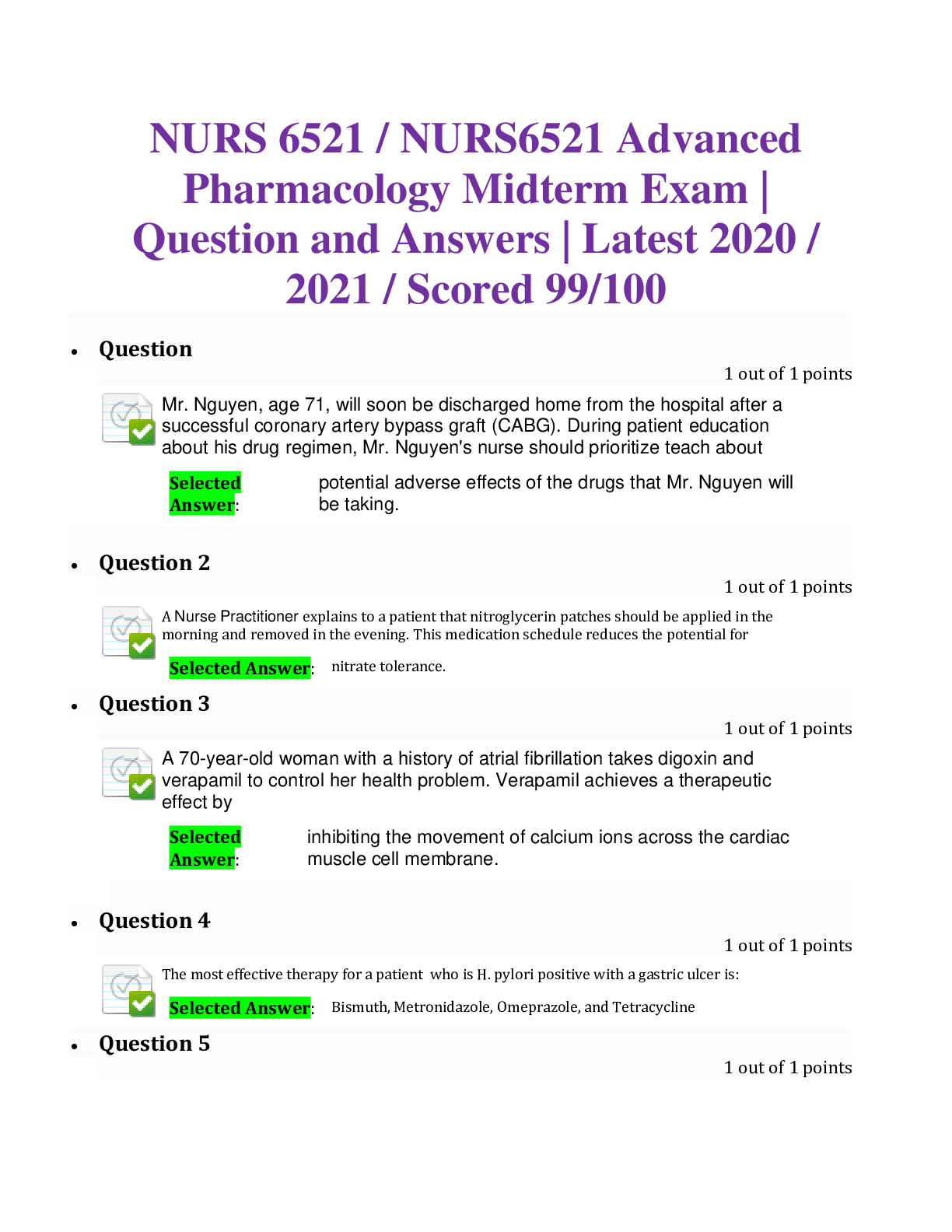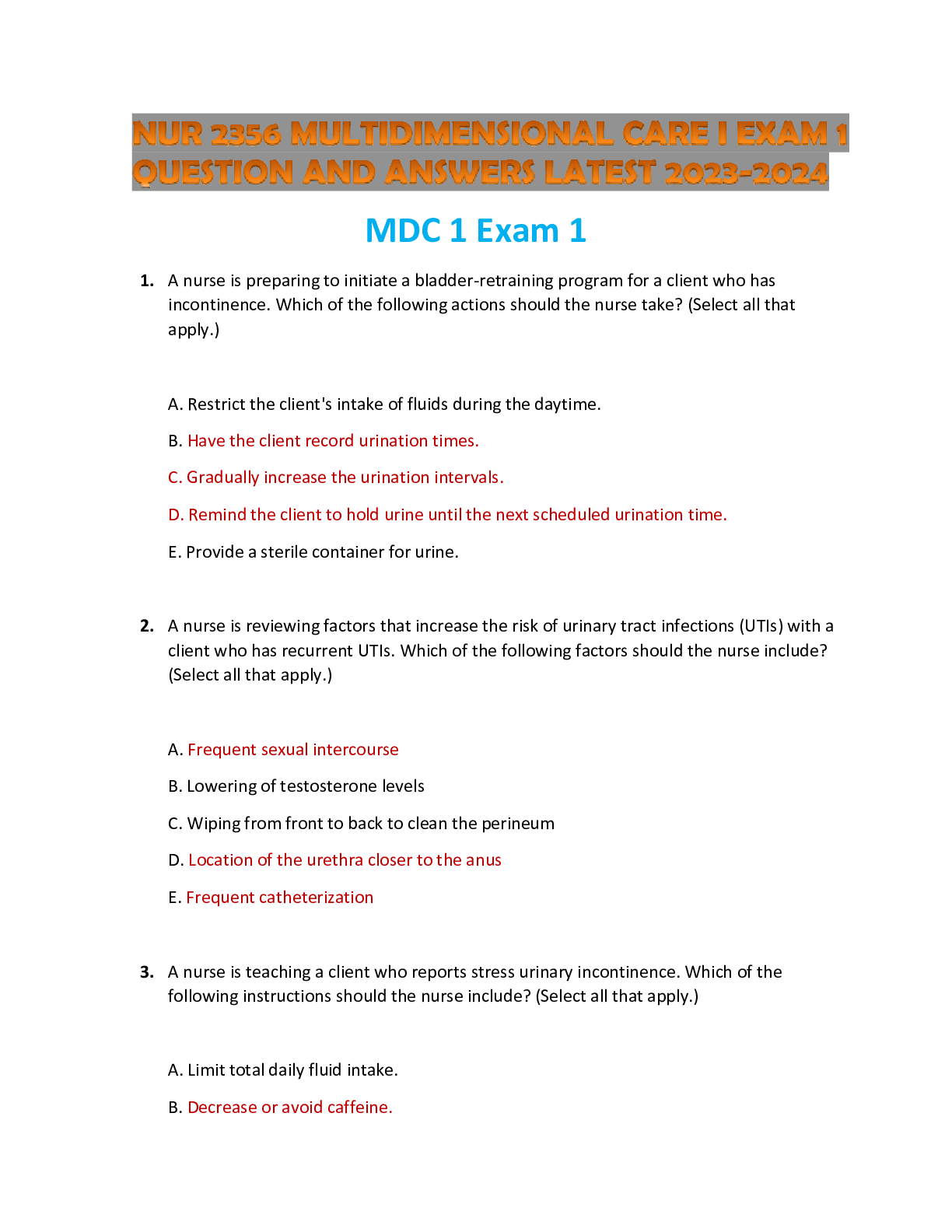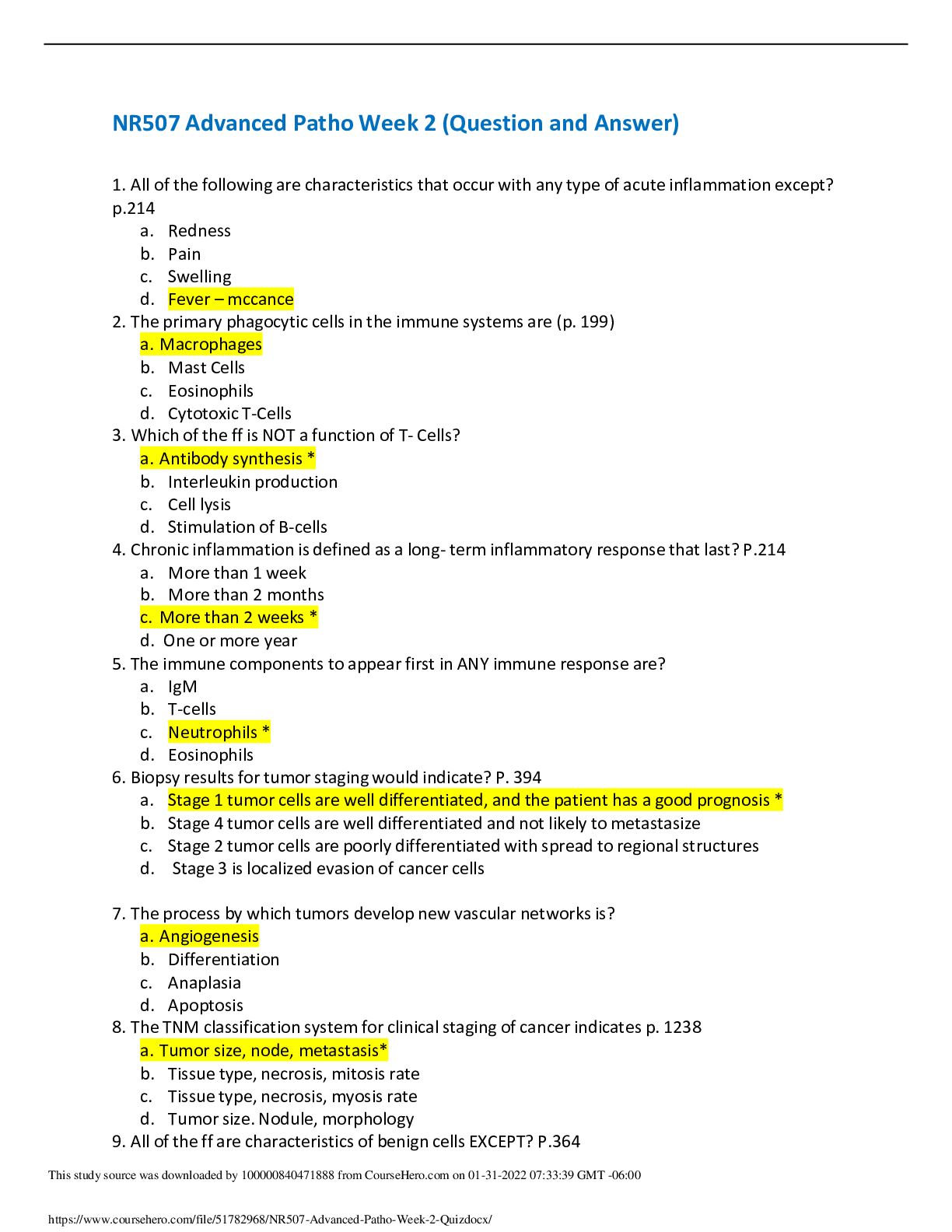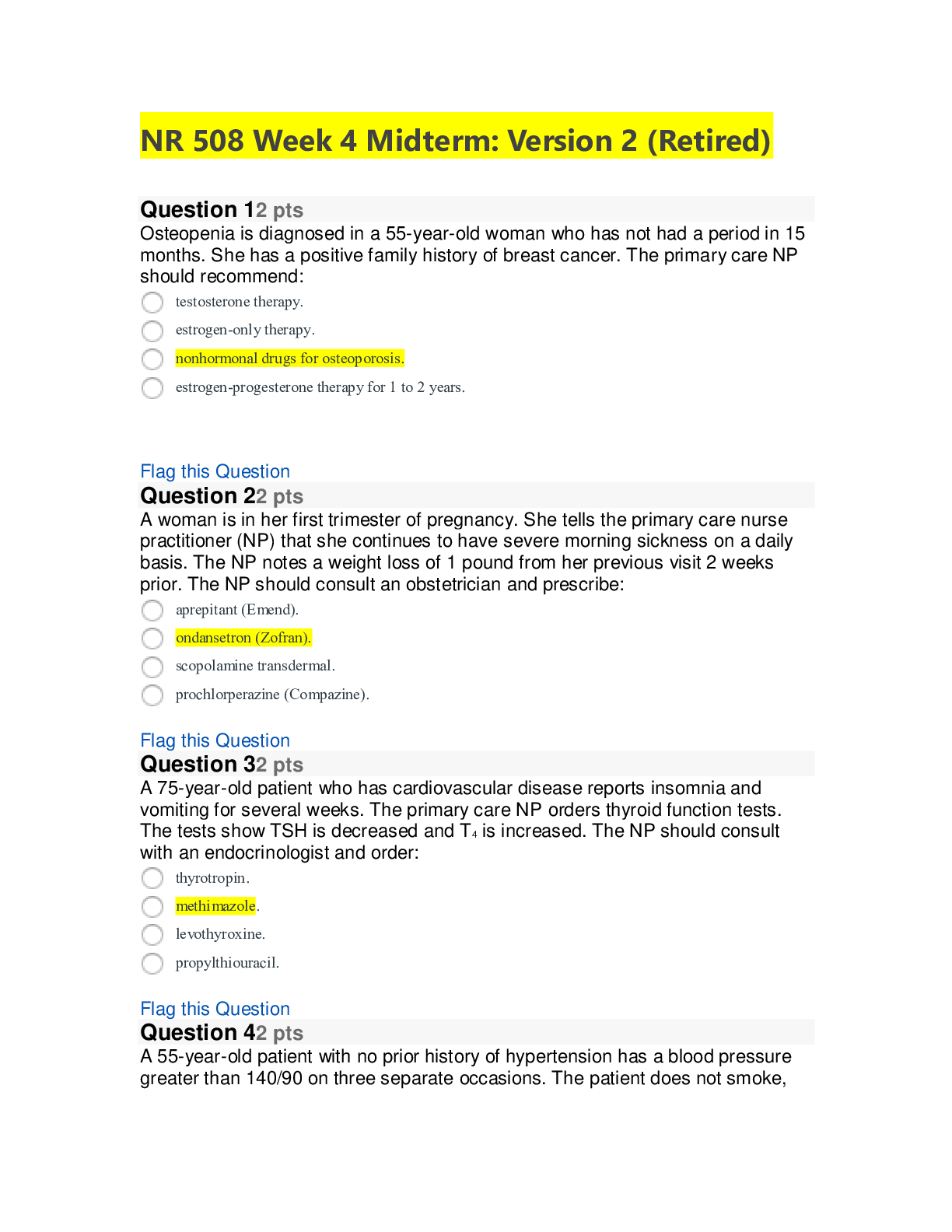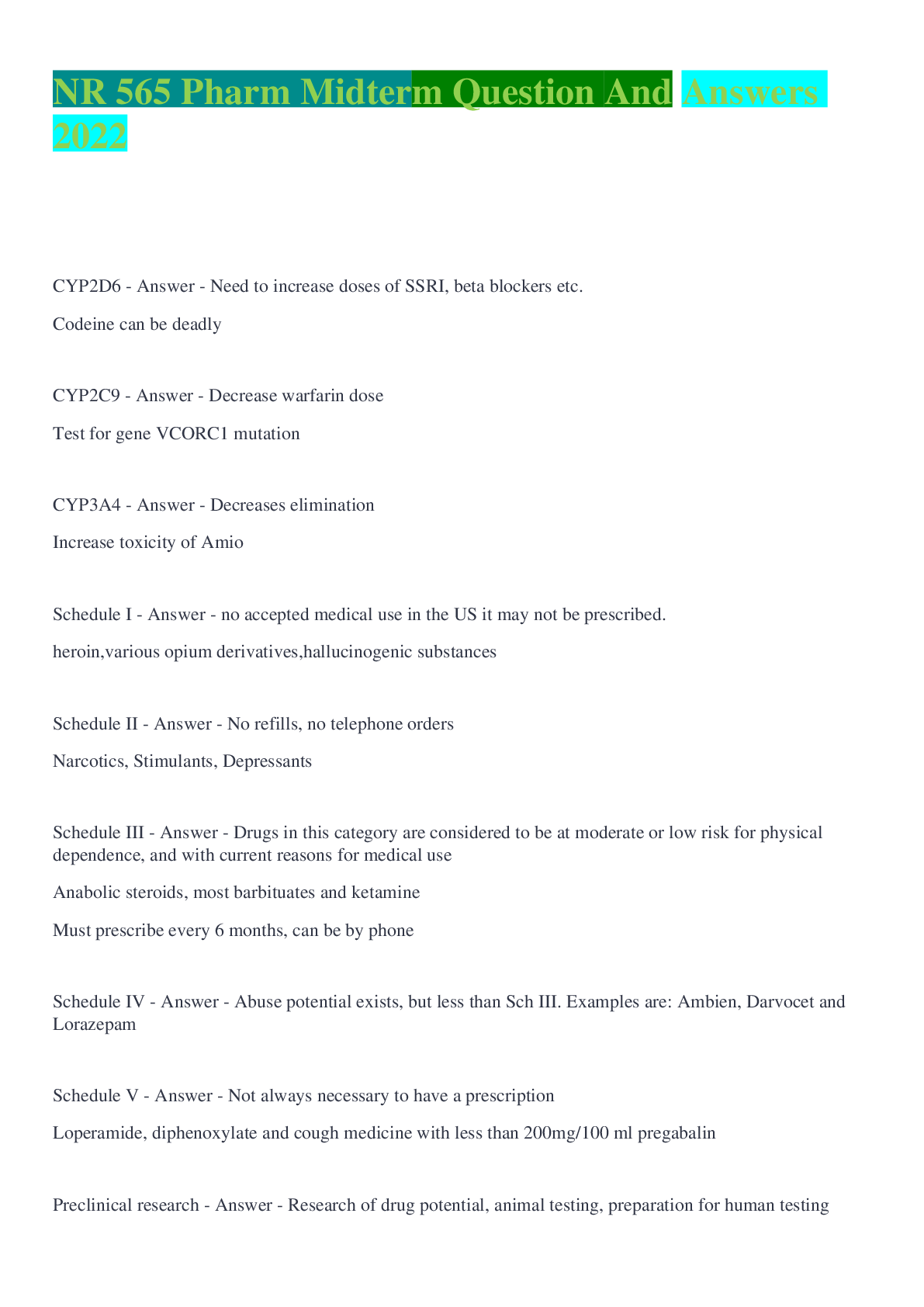Chemistry > EXAM > CHEM 120 Unit 1 Quiz | GRADED A Question and Answer Solutions | 100 % VERIFIED. (All)
CHEM 120 Unit 1 Quiz | GRADED A Question and Answer Solutions | 100 % VERIFIED.
Document Content and Description Below
Week 1: Quiz Instructions Here is some information about the quiz. • This quiz covers COs 1 and 2 and Chapters 1, 2, and 3. • This quiz is worth 30 total points, which include the followin... g questions: o 10 multiple choice questions (2 points each); o 2 short-answer questions (3 points each); o one essay question 4 points. • You have 40 minutes to finish the quiz. • When the time limit is reached, you will automatically be exited from the exam. By submitting this work, I am attesting that it abides by the Student Honor Code. Good luck! (TCO 1) You have been growing the same variety of corn for over 5 years. In the past two years, you have noticed that the yield has decreased by 10% each year. You grow corn on 10 acres of land and your yield should be 1,000 bushels per acre. Growing conditions have been consistent for the past 5 years. You want to identify another variety of corn that will produce 1,000 bushels per acre. You currently grow Variety ZQB. You want to test two new varieties, CAQ and TWX. You hypothesize that CAQ will produce 1,000 bushels per acre. Design an experiment to test this hypothesis. Include your control(s) (1 pts) and your experimental design (3 pts). Describe the experimental results that would support your hypothesis. (1 pts) Be specific. Your Answer: Observation: Variety currently does not produce at least 1000 bushels per acre each year. My hypothesis is that CAQ will produce 1000 bushels per acre. Experiment: Use 3 acres for CAQ and 3 acres for TWX, water all variety at the same time and day. Continued experiment each year for 4 years. Controls: Using ZQB corn for the remainder 4 acres and watering all 10 acres at the same time. Results: ZQB continued to decrease by 10% each year on average. CAQ produced 1000 bushels per year on average. and TWX only produced 600 bushels per year on average. As a result my hypothesis was correct. Answers will vary. Chapter 1 and lecture. (TCO 1) How many pounds are in 5 kg? Show your work. Your Answer: 2.2 pounds = 1kg 5kg x 2.2 pounds/1kg= 11 lbs x pounds = 5 kg x (1 lb/0.454 kg) = 11 lb (Chapter 1; 1 pt for units, 1 point for conversion factor; 1 point for answer) (TCO 1) What is the mass of 50.0 mL of an intravenous glucose solution with a density of 1.15 g/mL? Show your work. Your Answer: mass= dxv 1.15g/mL x 50 mL = 56g Density = mass in g/volume in mL; m = d * v; x g = (50.0 mL) x (1.15 g/mL) = 57.5 g (Chapter 1; 1 pt for units, 1 point for showing work; 1 point for answer) (TCO 2) Consider a neutral atom with 30 protons and 34 neutrons. The number of electrons in this atom is 34. 64. 32. 94. ***30. TYPE: MC Chapter 3; In a neutral atom, the number of protons equals the number of electrons. Therefore, the number of electrons in this instance is 30. (TCO 2) Consider a neutral atom with 30 protons and 34 neutrons. The mass number for this atom is 32. 64. 34. 30. 62. Chapter 3; Mass number = number of protons + number of neutrons = 30 + 34 = 64 (TCO 2) Heptane is always composed of 84% carbon and 16% hydrogen. This illustrates the law of definite proportions. conservation of mass multiple proportions. all of the above. none of the above. Chapter 2 (TCO 2) The observation that 20 g of hydrogen gas always combines with 160 g of oxygen to form 180 g of water, even when there is more than 160 g of oxygen present in the reaction container, illustrates the law of multiple proportions. definite proportions. ideal gases. all of the above. none of the above. Chapter 2 (TCO 2) Which type of radioactivity has essentially no mass? alpha beta gamma all of the above. none of the above. Chapter 3 (TCO 2) Which type of radioactivity has a positive charge? alpha beta gamma all of the above. none of the above. Chapter 3 (TCO 2) Isotopes are atoms of the same element with different numbers of neutrons. different numbers of electrons. different number of protons. different atomic numbers. none of the above. Chapter 3 (TCO 2) The proton has the same mass and charge as the electron. the smaller mass and same charge as the electron. a smaller mass and opposite charge as the electron. a larger mass and opposite charge as the electron. none of the above. Chapter 3 (TCO 2) Which subatomic particles have approximately the same mass? electrons and neutrons electrons and protons ***neutrons and protons electrons, neutrons and protons none of the above Chapter 3 (TCO 2) A neutral atom has the same number of electrons and neutrons. electrons and nucleons. electrons and protons. neutrons and protons. none of the above. Chapter 3 Quiz Score: 20 out of 30 [Show More]
Last updated: 1 year ago
Preview 1 out of 6 pages
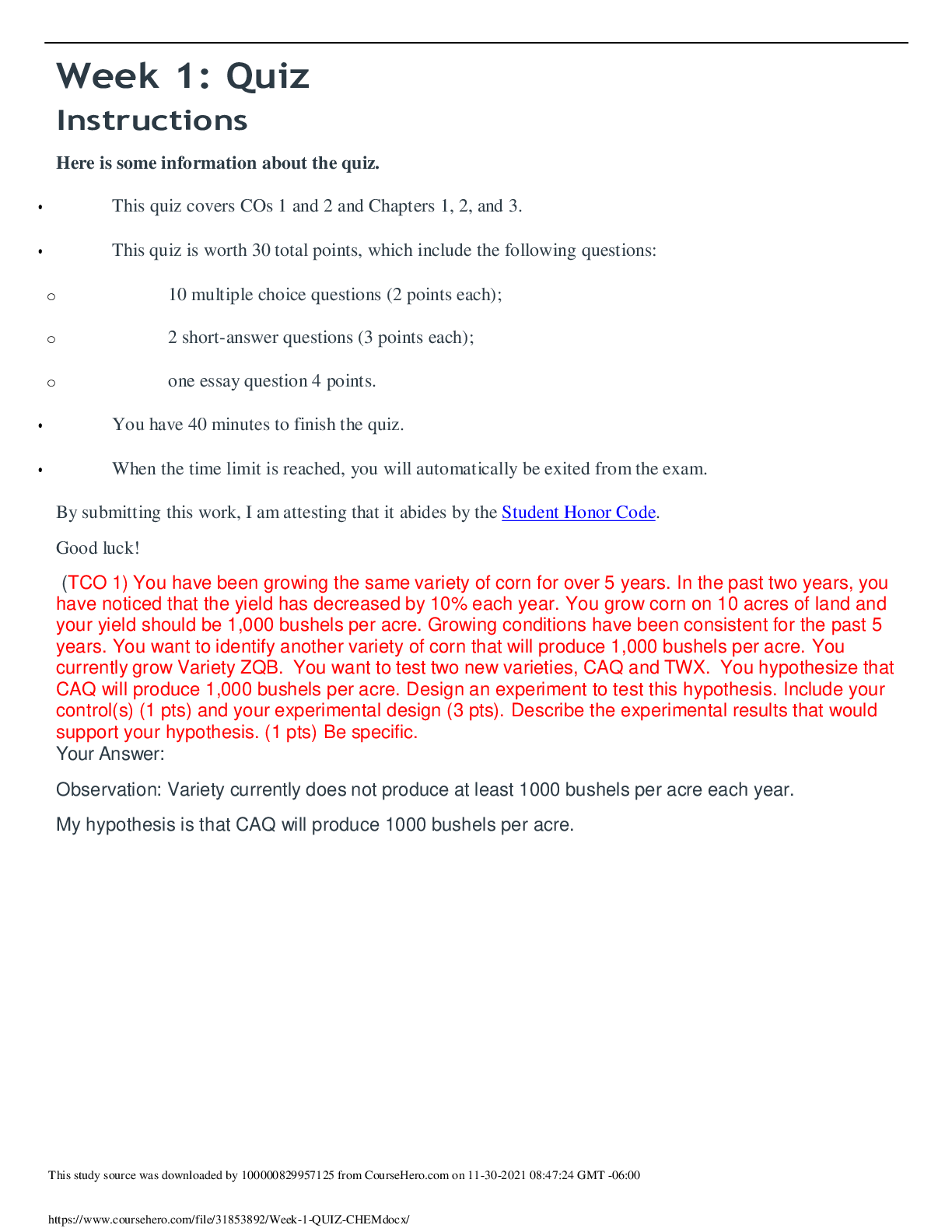
Reviews( 0 )
Document information
Connected school, study & course
About the document
Uploaded On
Nov 30, 2021
Number of pages
6
Written in
Additional information
This document has been written for:
Uploaded
Nov 30, 2021
Downloads
0
Views
57
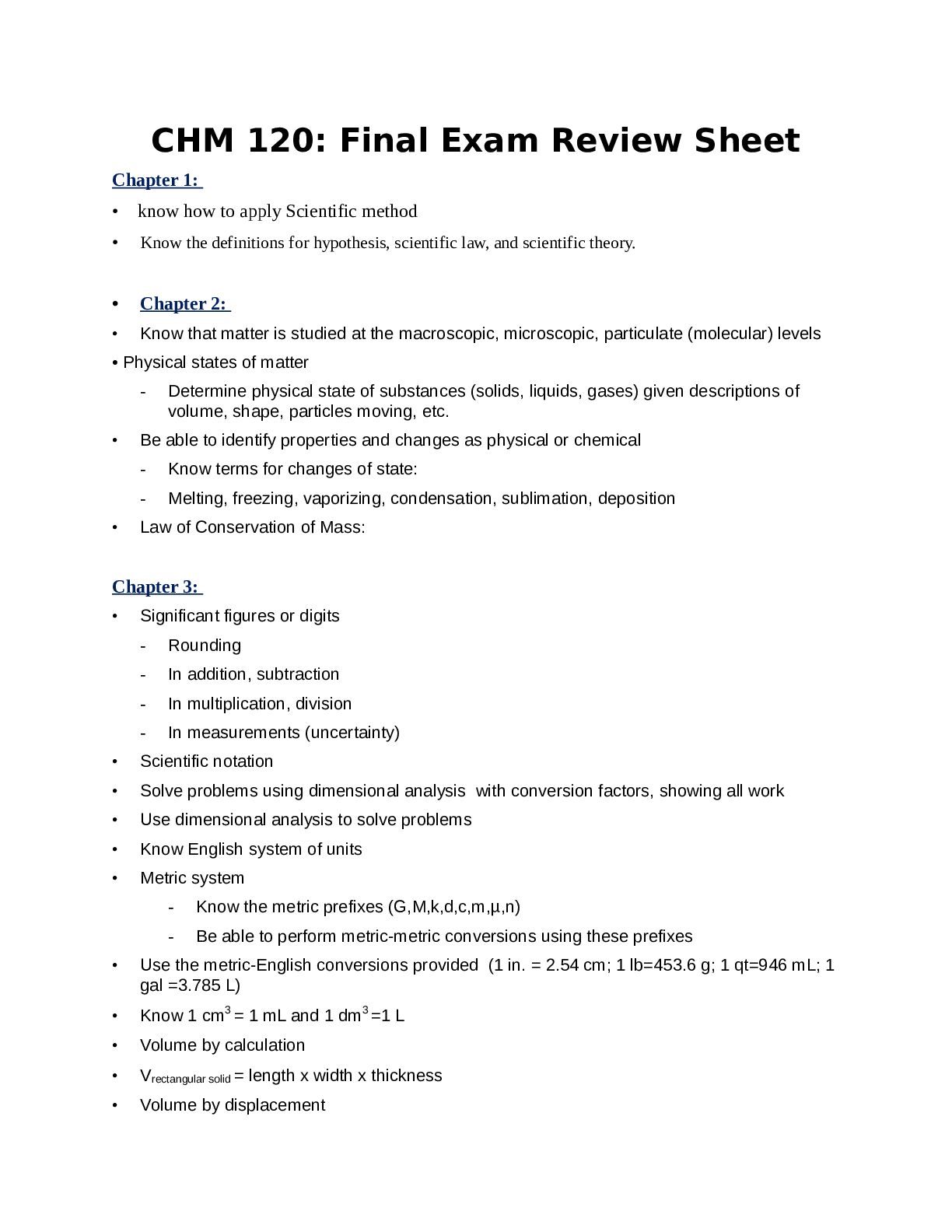






.png)














